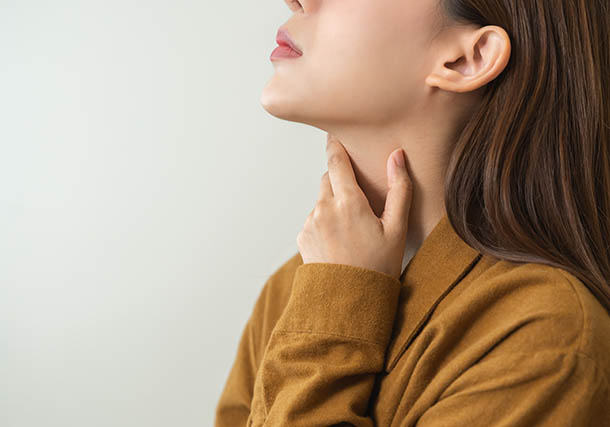
Eosinophilic Esophagitis Treatment in Charlotte
Esosinophilic esophagitis can be a frustrating and difficult condition for many individuals, as it may causes lifelong affects in your esophagus. At Carolina Asthma & Allergy Center, we understand the impact that eosinophilic esophagitis can have on your lifestyle and well-being, and we are committed to providing comprehensive care to help manage and treat this condition.
Our team of board-certified allergists and experienced healthcare professionals is dedicated to providing personalized treatment plans and ongoing support to help you live your life to the fullest. Whether you are seeking a diagnosis, treatment, or ongoing management of your eosinophilic esophagitis so you can find relief from your symptoms, we are here to help you every step of the way.
How to Request an Appointment
At Carolina Asthma and Allergy Center, we offer comprehensive evaluation and treatment for your eosinophilic esophagitis. If you suspect you may have eosinophilic esophagitis or have experienced symptoms in your esophagus, you can request an appointment with our team of board-certified allergists and experienced healthcare professionals.
To schedule an appointment, you can call our office or fill out the online appointment request form on our website. Our friendly staff will work with you to find a convenient date and time for your visit.
During your appointment, our allergists will review your medical history, perform a physical exam, and conduct any necessary tests to determine if you have eosinophilic esophagitis. Based on your evaluation, our team will develop a personalized treatment plan to help manage your symptoms.
What is Eosinophilic Esophagitis?
Eosinophilic esophagitis (EE of EoE) is a chronic allergic inflammatory disease that occurs when eosinophils, a disease-fighting white blood cell accumulates in the esophagus causing damage. The result is inflamed, scared or injured esophageal tissue.

What Causes Eosinophilic Esophagitis?
Medical researchers believe that there are numerous environmental and genetic factors that go into the development of eosinophilic esophagitis. For someone who has the disease, there are different triggers that can cause a flare-up, which results in esophageal injuries. While it’s normal for eosinophils to fight off harmful bacteria, for someone with eosinophilic esophagitis the white blood cells identify normal particles, like pollen, as foreign substances.
A few risk factors for eosinophilic esophagitis include:
- Geography, people who live in cold or dry climates
- High-allergy seasons, such as Fall or Spring
- Gender, more frequent in males
- Family history, eosinophilic esophagitis may be passed down genetically
- Allergies or asthma
Adverse immune response to foods are a main cause in many patients. Eosinophilic esophagitis can also occur as a result of acid reflux.
What are the Symptoms of Eosinophilic Esophagitis?
The symptoms of eosinophilic esophagitis often present themselves differently in children as compared to adults. Children with may have trouble feeding or eating, depending on their age, which can potentially lead to limited growth, malnutrition and weight loss. They may also experience vomiting as a result of the disease.
Adults on the other hand, may feel persistent heartburn and chest pain because of eosinophilic esophagitis. In addition there can be
- Difficulty swallowing
- Food becoming “stuck” in the esophagus
Eosinophilic Esophagitis Treatment in Charlotte
Depending on the patient’s severity and allergen triggers, there are three main treatment options available to people with eosinophilic esophagitis: dietary therapy, medication and dilation. If the eosinophilic esophagitis is inflamed in response to a food allergy, then it is recommended that the patient stops eating certain foods or sticks to a regimented diet. Some medication the doctor is likely to prescribe includes proton pump inhibitor or, if symptoms persist, a topical steroid.
Dilation is a less frequent measure that is recommended when the patient experiences severe narrowing of their esophagus. Dilation essentially stretches the esophagus to make swallowing easier and less painful.
Summary
At Carolina Asthma and Allergy Center, we are dedicated to providing compassionate care and ongoing support to help you live your life to the fullest. Contact us today to request an appointment and take the first step towards managing your eosinophilic esophagitis.
Eosinophilic Esophagitis FAQs
How common is eosinophilic esophagitis?
According to the ACAAI, one to four of every 10,000 Americans are affected by the disease, and approximately 50 percent of patients are also diagnosed with seasonal allergies or asthma.



